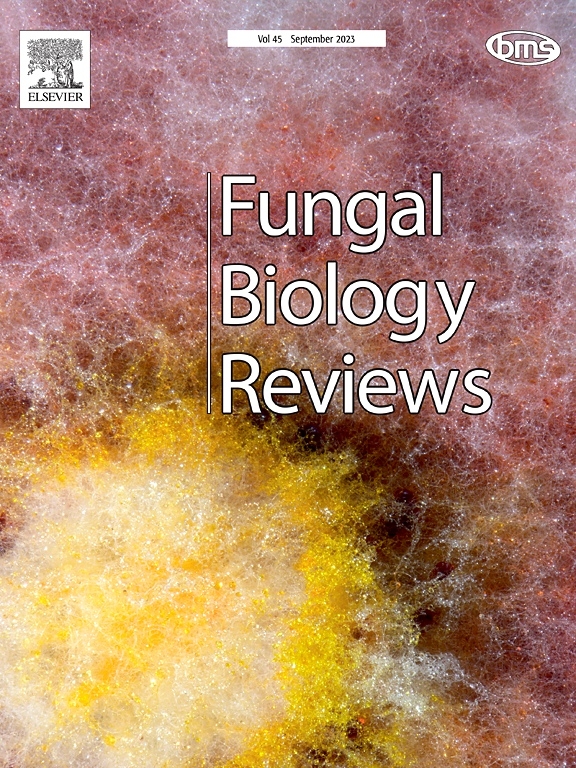节肢动物绿僵菌寄生的蛋白质组学研究
IF 4.6
2区 生物学
Q1 MYCOLOGY
引用次数: 0
摘要
绿僵菌属的物种具有生态和生物技术相关性,因为它们感染和控制节肢动物,而节肢动物通常是牲畜和作物的害虫。绿僵菌属真菌是化学农药的重要替代品,这些农药对人类和动物有毒,对环境有害。包括蛋白酶、几丁质酶、脂肪酶和氧化还原酶在内的蛋白质的差异分泌对于绿僵菌感染系统对抗多种节肢动物目标的有效性至关重要。蛋白质组学技术,如二维凝胶电泳和不同的质谱方法,已经被用来有效地识别与各种昆虫和蜱虫感染有关的数百种蛋白质,以及具有不同亚细胞定位的蛋白质。本文综述了蛋白质组学在绿僵菌属中用于鉴定重要感染蛋白的研究现状,涵盖了各种害虫的生物防治,并详细介绍了技术、实验方法和鉴定的蛋白。本文章由计算机程序翻译,如有差异,请以英文原文为准。

Proteomics in Metarhizium parasitism of arthropods
Species of the genus Metarhizium are ecologically and biotechnologically relevant as they infect and control arthropods, which are often pests of livestock and crops. Fungi from the genus Metarhizium are important alternatives to chemical pesticides that are toxic to humans and animals as well as deleterious to the environment. The differential secretion of proteins, including proteases, chitinases, lipases, and oxidoreductases, is crucial to the effectiveness of the Metarhizium infection system against a wide range of arthropod targets. Proteomic techniques, such as two-dimensional gel electrophoresis and different mass spectrometry approaches, have been employed to effectively identify hundreds of proteins linked to the infection of various insects and ticks, as well as proteins with different subcellular localization. Here, we review the status of proteomics applied to the Metarhizium genus to identify proteins important for infection, covering the biocontrol of various pests and specifying the techniques, experimental approaches, and identified proteins.
求助全文
通过发布文献求助,成功后即可免费获取论文全文。
去求助
来源期刊

Fungal Biology Reviews
MYCOLOGY-
CiteScore
10.60
自引率
0.00%
发文量
36
期刊介绍:
Fungal Biology Reviews is an international reviews journal, owned by the British Mycological Society. Its objective is to provide a forum for high quality review articles within fungal biology. It covers all fields of fungal biology, whether fundamental or applied, including fungal diversity, ecology, evolution, physiology and ecophysiology, biochemistry, genetics and molecular biology, cell biology, interactions (symbiosis, pathogenesis etc), environmental aspects, biotechnology and taxonomy. It considers aspects of all organisms historically or recently recognized as fungi, including lichen-fungi, microsporidia, oomycetes, slime moulds, stramenopiles, and yeasts.
 求助内容:
求助内容: 应助结果提醒方式:
应助结果提醒方式:


